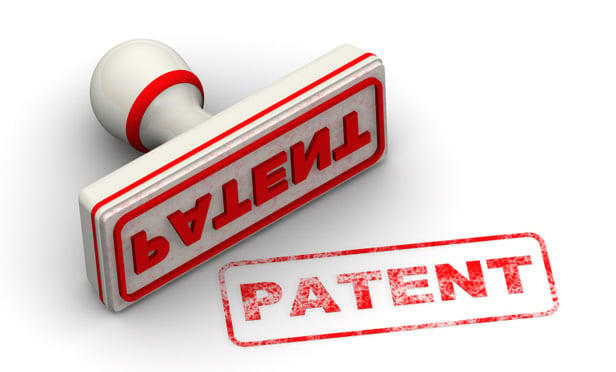Features

As Section 101 and the Progeny of Mayo and Myriad Continue to Wreak Havoc on Portfolios, How Is The Life Sciences Industry Fighting Back?
Since the U.S. Supreme Court decided Mayo and Myriad, the Federal Circuit has expanded the holdings and invalidated more patents directed to biological discoveries. If the newly discovered correlations and properties of what is found in nature cannot be patented, what strategies for protection are left for companies doing biological research?
Features

Stanford Is Serving 11 Flavors of NPE
Stanford Law School made available to the public a database of every patent lawsuit that's been filed since 2007.
Features

The USPTO Brings New Guidance to the Section 101 Quandary
<b><i>Part Two of a Two-Part Article</b></i><p>USPTO Attempts to Provide Greater Clarity for Patent-Eligible Subject Matter
Features

Patent Eligibility Remains Uncertain — Especially for the Life Sciences — Even After Recent Federal Circuit Decisions and Efforts By the USPTO to Bring Clarity
Part One of a Two-Part Article Congress is empowered to create a patent system to promote the useful arts, and it has enacted laws to create a patent system that encourages innovation. Balancing that power, however, the courts in recent years have tried to rein in the scope of the patent right by limiting the scope of patent-eligible subject matter.
Features

Use of Arbitration In Place of Inter Partes Review Proceedings
An IPR might be more efficiently accomplished through arbitration than through a PTAB proceeding, so it should be considered by practitioners.
Columns & Departments
IP News
Obviousness-Type Double Patenting Does Not Invalidate Section 156 Patent Term Extension <br>Federal Circuit Holds Assignor Estoppel Does Not Apply in IPR Context<br>Federal Circuit Reverses District Court Holding of Patent Ineligibility of Computer Security Patent
Features

The PTAB's New Claim Construction Standard: Will the Real Impact Please Stand Up
Beginning on Nov. 13, 2018, the USPTO will cease to apply the broadest reasonable interpretation (BRI) standard for newly-filed IPR, PGR, and CBM trials under the America Invents Act (AIA). Instead, the USPTO will begin "using the same claim construction standard that would be used to construe the claim in a civil action …."
Features

The 'New NAFTA' and How It Will Affect Intellectual Property Law
The stage is set for the 24-year-old north American Free Trade Agreement (NAFTA) to end and the U.S. Mexico Canada Agreement (USMCA), which has implications for intellectual property, to take its place.
Features

The High Bar for Challenging an Improperly Revived Patent
The recent <i>In Re Rembrandt Technologies</i> decision is a reminder of both the potential consequence of a patent holder's disingenuous assertion of unintentionality and the challenges that defendants face when raising the improper filing of a petition to revive a lapsed patent as a defense.
Features

Non-Traditional Trademarks: The Elusiveness of Branding a Trend
A look at several unique trademark cases where the plaintiff fashion brand proactively sought to invalidate a competitor's non-traditional trademarks, an action which reflects a push back on increasingly aggressive litigation tactics by fashion brands seeking to blur the lines between a non-protectable fashion trend and a protectable trademark.
Need Help?
- Prefer an IP authenticated environment? Request a transition or call 800-756-8993.
- Need other assistance? email Customer Service or call 1-877-256-2472.
MOST POPULAR STORIES
- Use of Deferred Prosecution Agreements In White Collar InvestigationsThis article discusses the practical and policy reasons for the use of DPAs and NPAs in white-collar criminal investigations, and considers the NDAA's new reporting provision and its relationship with other efforts to enhance transparency in DOJ decision-making.Read More ›
- The DOJ's Corporate Enforcement Policy: One Year LaterThe DOJ's Criminal Division issued three declinations since the issuance of the revised CEP a year ago. Review of these cases gives insight into DOJ's implementation of the new policy in practice.Read More ›
- Surveys in Patent Infringement Litigation: The Next FrontierMost experienced intellectual property attorneys understand the significant role surveys play in trademark infringement and other Lanham Act cases, but relatively few are likely to have considered the use of such research in patent infringement matters. That could soon change in light of the recent admission of a survey into evidence in <i>Applera Corporation, et al. v. MJ Research, Inc., et al.</i>, No. 3:98cv1201 (D. Conn. Aug. 26, 2005). The survey evidence, which showed that 96% of the defendant's customers used its products to perform a patented process, was admitted as evidence in support of a claim of inducement to infringe. The court admitted the survey into evidence over various objections by the defendant, who had argued that the inducement claim could not be proven without the survey.Read More ›
- The DOJ's New Parameters for Evaluating Corporate Compliance ProgramsThe parameters set forth in the DOJ's memorandum have implications not only for the government's evaluation of compliance programs in the context of criminal charging decisions, but also for how defense counsel structure their conference-room advocacy seeking declinations or lesser sanctions in both criminal and civil investigations.Read More ›
- In the SpotlightOn May 9, 2003, the U.S. Attorney's Office for the District of Massachusetts announced that Bayer Corporation, the pharmaceutical manufacturer, had been sentenced and ordered to pay a criminal fine of $5,590,800 stemming from its earlier plea of guilty to violating the Federal Prescription Drug Marketing Act by failing to list with the FDA its drug product, Cipro, that was privately labeled for an HMO. Such listing is required under the federal Food, Drug & Cosmetic Act. The Federal Prescription Drug Marketing Act, Pub. L. 100-293, enacted on April 22, 1988, as modified on August 26, 1992 by the Prescription Drug Amendments (PDA) Pub. L. 102-353, 106 Stat. 941, amended sections 301, 303, 503, and 801 of the Federal Food, Drug, and Cosmetic Act, codified at 21 U.S.C. '' 331, 333, 353, 381, to establish requirements for distributing prescription drug samples.Read More ›
